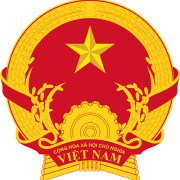
Technically and technologically speaking, Vietnam is entirely capable of testing 5G in the next few months and putting it into service it in 2020
Technically and technologically speaking, Vietnam is entirely capable of testing 5G in the next few months and putting it into service it in 2020 since the transfer and reception are not insurmountable hurdles to experts. Engineers at telecom corporations are constantly updating new technologies through their networks, as well as through their partners. In addition, international providers of equipment and solutions are “encouraging” Vietnam to join the 5G playing field offering multiple intriguing prospects.
Furthermore, many policymakers are excited about the Fourth Industrial Revolution (Industry 4.0).
Though the impact of the Industry 4.0 on socio-economic life is said to be huge, there have been statements that such thing should mainly occur in those nations in transition from the third to the fourth industrial revolution. Additionally, Vietnam’s infrastructure and development are at a lower level. Therefore, the impact will take place within a narrower range and certain areas only.
The same is true for 5G. A nationwide coverage of this generation of cellular mobile communications is far from simple. At a workshop called “Innovation in telecommunications” on November 14, the head of the Ministry of Information and Communications said Vietnam would be one of the first countries to put 5G into use. However, he also cautiously said that it would happen “first in Hanoi and HCMC if not in the entire country.” What he said may mean his expectations for a wide coverage of the 5G network are not so highly feasible.
Full-fledged 5G market a tough job
Only a few years after the worldwide proliferation of 2G, Vietnam made it to the word’s top 20 in mobile networks. Nearly 30 years later, the country now stands below the world average for broadband subscriber density. This suggests what telecom service consumers at home need are still mainly calls and messages.
Currently, about 13 million mobile subscribers are active with data connections, accounting for 30% of the total number of subscribers. Data connections mainly serve entertainment activities, particularly social networking. In addition, they are necessary for some applications on the smartphone platform such as booking a ride, making an appointment, or shopping. However, such needs may be addressed by 3G or 4G. What’s more, the quality of 4G transmission is still below bar, just several times faster than 3G, not 10 times as defined.
Another important factor for 5G development is the accompanying app. The fifth-generation cellular technology is to be applied in transport (self-driving, real-time traffic management), healthcare (telemedicine) and the Internet of things. However, these domains seem to be still exotic in Vietnam.
Some countries whose economies and infrastructure are more developed than Vietnam have exercised caution in the development of 5G. The latest report of the GSM Association forecasts there will be 675 million 5G subscribers in Asia-Pacific by 2025, representing 14% of the total number of mobile subscribers and 37% of the population. Even those nations with developed infrastructure like Japan, South Korea and Australia will mainly focus on urban areas. By 2025, only 50-60% of mobile subscribers will have 5G connections.
In fact, in developed countries, if service providers properly fulfill their commitments on bandwidth and transmission quality, the majority of applications and consumer needs can be done with 4G. Mass application developers have not really paid much attention to 5G since what they care about is also consumer demand.
Beyond the pilot scheme
The political will may mean that the 5G network will certainly be tested, and then piloted in Hanoi and HCMC. However, as far as the efficiency of investment projects is concerned, the introduction of 5G should be carefully scrutinized to give answers to the following questions.
First, how efficient is the investment in the 5G network? As estimated by European telecom operators, improving the 4G network and implmenting 5G could push up capital expenditures by 60% during 2020-2025. For 5G alone, the capex-to-revenue is projected to surge 13-22%. Currently, the three largest telecom service providers in Vietnam are all State-owned enterprises. Although the evaluation of their investment efficiency may be slightly less strict, one cannot help comparing them with other companies in the same industry.
Second, how many subscribers do you need to start recouping your investment? Mobile service needs in Vietnam can be addressed with mostly 2G, partly 3G and 4G. Future prospects for the 5G network regarding applications and the Internet of things remain unclear here in Vietnam. The 4G platform, if properly exploited, is able to meet the demand of the market.
In case 5G is carried out for the sake of only a few applications and a small group of customers in large cities, will the majority of telecom service users suffer losses and have to offset them? New technology is always attractive, but it is a must to assess the actual situation and make rational forecasts about the demand. Oftentimes, the best solution is not the most up-to-date technology.
